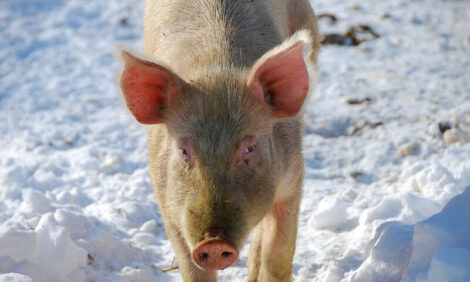



Castration rule change a chance for Europe’s producers to get ‘smarter, faster’
Changes to rules around pig castration in Europe should be viewed as an opportunity to improve welfare and efficiencies rather than a problem producers need to overcome, says pig health expertNiels Wuyts DVM, technical director for swine for Zoetis in Belgium, said new regulations banning physical castration in Germany without anaesthesia and analgesia will radically change the way farmers operate.
But he said rather than seeing the legislation as restrictive, producers should view the change as a chance to make improvements and differentiate themselves from competitors.
Three options
Beginning January 1, 2019, rules introduced by Germany’s federal government will give the country’s producers three choices.
They can carry on castrating but use an anaesthetic, breed entire males, or use immunocastration technology - a vaccine that contains a naturally occurring compound called GNRF (gonadotropin releasing factor analog-diphtheria toxoid conjugate).
Administered over two doses, the vaccine uses the pig’s immune system to reduce the production of androstenone and skatole - two hormones which cause boar taint.
Speaking to Pig Health Today during the Leman Swine Conference in St. Paul, Minnesota, Wuyts said given Europe’s high costs of production, anaesthetising pigs when producers are trying to run efficient systems is challenging.
Similarly, raising entire males can be problematic as it can result in unwanted behaviour, boar taint and meat quality issues.
Take advantage of boars’ potential
Instead, he said producers should take advantage of boars’ growth potential by breeding them to a 130 kg - higher than the European average slaughter weight of 120 kg - but address the associated production problems through vaccination.
“Vaccine makes the boars physiologically behave like barrows, so they eat and sleep and have no boar taint. They have no boar behaviour,” he said.
“On top of that, because they eat more, they start to grow faster and lay on fat, so you have an animal with more marbled meat compared to a real boar.”
Despite the potential to drive production efficiencies across all systems, however - and the technology’s ability to improve welfare and reduce antibiotics use - Wuyts said not every producer is flexible enough to adopt it.
What’s more, retailers and processors also have to see the benefits of the technology - something which is only happening gradually.
‘Benefits are there’
“We’re not an integrated market [in Europe] so you have to have value-added for the farmer, the packer, the processor and the retailer,” he said.
“And only when that works, everyone will accept your production. That’s not an easy job, but the benefits are there.
“Europe can’t win the competition [on efficiency] if we don’t get smarter, faster,” he added. “And at this moment, I’m afraid I don’t see that happening enough.”
In the future, Wuyts said he hopes Europe’s hog farmers will take the challenges raised by the change in legislation and turn them into opportunities.
“The top swine producers of the world already looked at this evening without legislation or anything about welfare pressure,” he said.
“They saw the opportunities of boars versus castrates… and they are distancing themselves competitively from the pack, which is just looking at the problems.
“My advice would be, look at the opportunity and differentiate yourself from that pack.”









